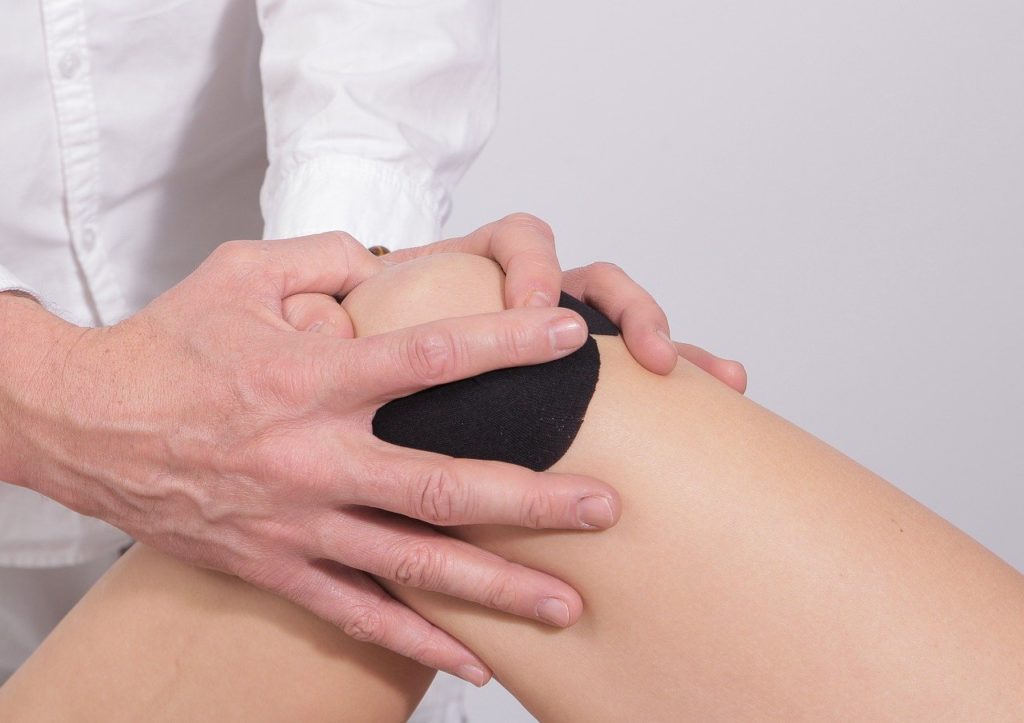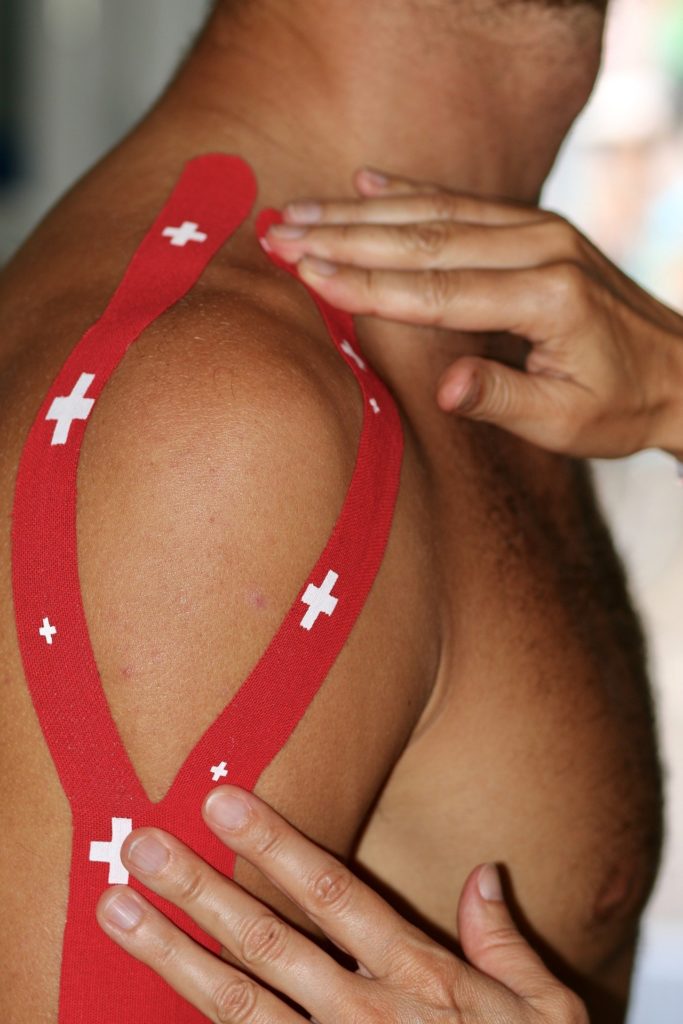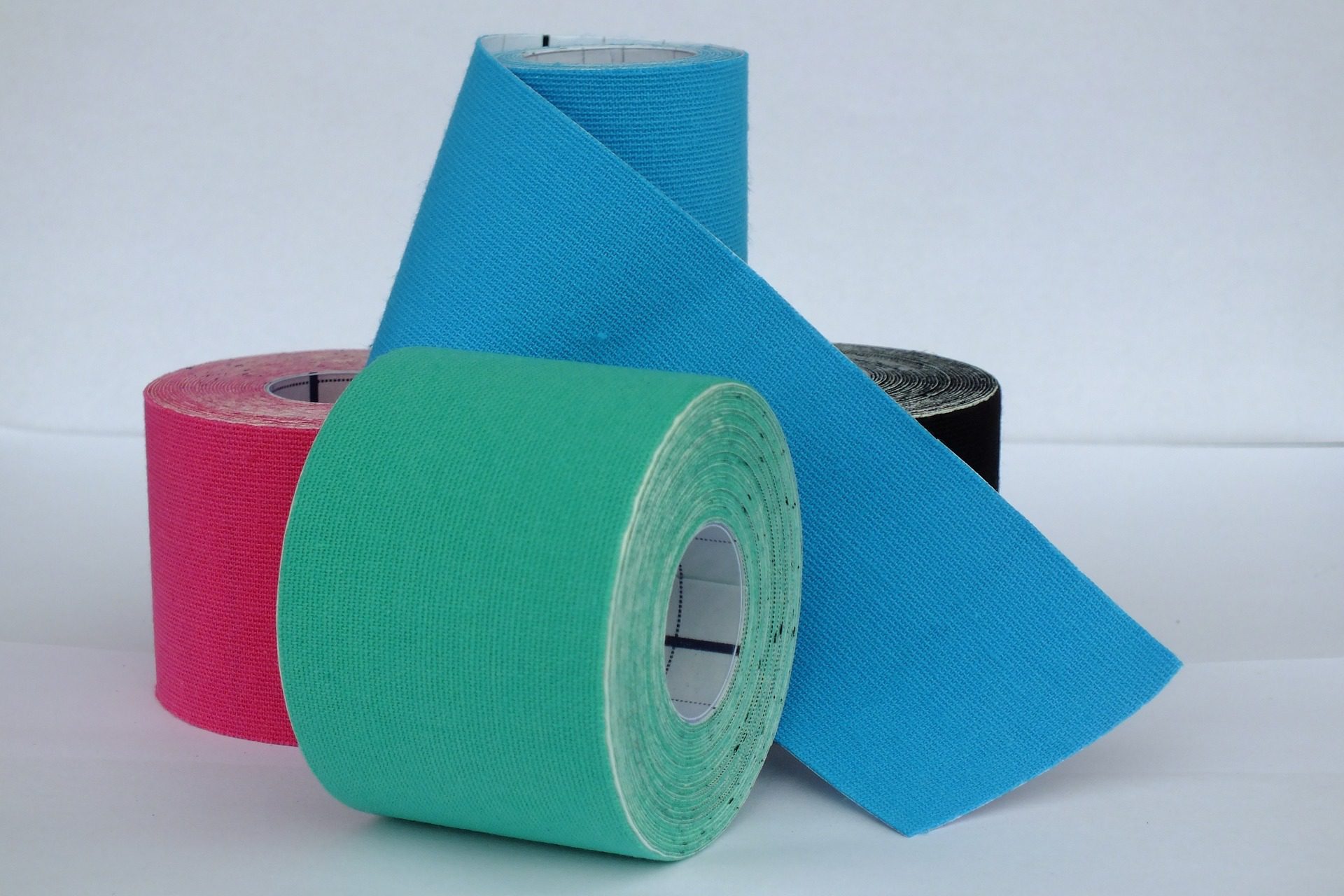Physiotherapists often use kinesiology taping when treating injuries. They use it mostly as part of an overall treatment plan for pain relief and recovery. According to the physiotherapists, although the method of taping is very common, it is most effective only when used in conjunction with other techniques of physical therapy, which proves its complementary role in healing pain and reducing inflammation.
It is a norm among athletes and sportspeople to use kinesiology tape across their bodies. Especially the shoulders, knees, abs, and backs that provide additional support. It makes them more confident in performing without worries about pain and discomfort. Their muscles remain tight and taut with minimal chances of damage. The tapes are highly flexible and do not interfere with the body movements and help to improve performance physiotherapy Cambridge.
Kinesiology taping is the use of a slight, stretchy, cotton-based therapeutic tape that can benefit a wide assortment of wounds and burning conditions. It is practically indistinguishable from human skin in both thickness and versatility. This permits it to be worn without official, tightening, or limitation of development.
You would have seen that an ever-increasing number of expert competitors use kinesiology taping to improve their donning execution.
Kinesiology Taping has its starting points in an antiquated taping for help. The tape balances out a sprained lower leg, offering some curve help. Its nearby cousin, pressure dressing, likewise has an unmistakable, conventional spot in medication. Such clear uses are not being investigated here. After some time, taping gradually began to include increasingly more whimsical biomechanical tinkering, attempting to “right” the position and development of body parts. In essence, a great model is attempting to make kneecaps slide more evenly.5 this is progressively questionable stuff. It’s very hard to fix supposedly useless biomechanics with tape. Because the greater part of these issues don’t generally exist
How and why physical therapists and athletes use the tapes will become clear ongoing through this article.
Table of Contents
A stretchable tape
Cotton and nylon are the proprietary materials used in the tapes in its original form when invented in the 1970s in Japan by Dr. Kenzo Kase. The tape is like athletic tapes but far more effective in supporting muscles. The tape has elastic properties that mimic the skin’s elasticity so that it allows a full range of motions. The medical-grade adhesive used in the tape is water-resistant and has enough strength to adhere for 3-5 days while withstanding the daily chores, including showers. When the tape sits on the body, it slightly recoils the skin, thereby creating microscopic space between the skin and tissues under it.
Increase space in the joints
Those who suffer from knee pain or any other joint pain will find the tape very effective in reducing pain and helping them walk easily. The pain is the result of the reduction in space between the bones in the knee. The tape works by increasing the space between the bones in the knee joint. The effect is the same when using the tape on the shoulders to reduce pain. The space increase is almost microscopic, but that helps to reduce the friction between the bones and reduce pain and joint stiffness.

Kinesiology Tape Works
Kinesiology tape works—when applied effectively—by lifting the skin from the tissues beneath it. Everybody has nerve receptors in their skin, just as in the profound layers of the sash, muscles, and other connective tissues, when the tape is applied, it causes pressure or decompression of these zones, as far as anyone knows permitting it to change torment signs to the mind.
Combined with CBD, Kinesiology tape is another innovative approach that harnesses the benefits of both components, providing a more comprehensive solution than traditional kinesiology tape alone.
Users can experience additional therapeutic potential by integrating CBD into the tape. Kinesiology tape with CBD, derived from the cannabis plant, has gained recognition for its various wellness benefits. It is known to possess analgesic, anti-inflammatory, and muscle-relaxing properties. These attributes can be particularly valuable in addressing pain, reducing inflammation, and promoting recovery
The kinesiology Taping Method
Kinesiology taping is a complete rehabilitative taping procedure that encourages the body’s normal mending process. While offering help and strength to muscles and joints without limiting the body’s scope of movement just as giving stretched out delicate tissue control to draw out the advantages of manual treatment directed inside the clinical setting. The tape does not have latex. It is wearable for a considerable length of time. Kinesiology Tex Tape is ok for populaces running from pediatric to geriatric. It effectively treats an assortment of orthopedic, neuromuscular, neurological, and other ailments.
In view of long stretches of clinical use, kinesiology Tex Tape is explicitly applied to the patient dependent on their necessities after assessment. The discoveries of the clinical assessment or appraisal direct the particulars of the kinesiology Tex Tape application and other potential medicines or modalities. With the use of single “I” strips or adjustments looking like an “X,” “Y,” or other specific shapes just as the course and measure of stretch put on the tape at the time of use, kinesiology Tex Tape can be applied in many manners. It can correct the neuromuscular framework, diminish torment and irritation, upgrade execution, forestall injury and advance great dissemination and recuperating, and help with restoring the body to homeostasis.
Apply kinesiology tape correctly
Prep the skin before you apply the tape – Wash the application zone to evacuate soil, oil, creams or salves. Expel hair in the application zone.
Measure twice, cut once – Ensure that the tape is the best possible length, at that point round the corners, so they don’t get on dress (and strip away).
Remember to break the paper backing through the tape – Keeping a touch of paper on the end, so you don’t contact the cement.
Stretch and apply – Pull the tape until the little hexagon is equivalent on all sides, showing you’ve arrived at 25% stretch. For half stretch, pull until the huge hexagon is equivalent on all sides. Delicately tap the extended tape into place, beginning from the grapple and working your way to the finish of the tape (the last stay).
Anchor your tape – Despite the predetermined stretch, consistently apply the last a couple of creeps of tape without stretch. This keeps your tape work tied down to set up.
Rub the tape to initiate its cement. To ensure that your tape sticks like it should, be certain you rub it into the skin after you’ve set it. This permits the tape to stick to your skin appropriately.
Keep it dry – For at any rate an hour, let the glue appropriately security without practice or showering.
Take it off gradually. To reduce aggravating your skin, push down on the exposed skin nearest to the tape being expelled as you gradually pull the tape back.

Changes the pain signals
Pain is a feeling experienced by people when the sensory nervous system sends the pain signals to the brain. The sensory receptors under the skin, fascia, muscles, and connective tissues feel temperature, pain, and touch and send signals to the brain to inform what is going wrong in the body and where. The tape decompresses those tissues and alters the signal that reaches the brain that makes the brain act differently, and the pain goes away.
Improves blood and fluids circulation
That kinesiology tape reduces inflammation is a proven fact which illustrates that it improves blood circulation that resulted in the swelling to go away. Studies have shown that kinesiology tape improves blood flow in the skin and lymphatic fluids, which is responsible for controlling inflammation.
In addition to treating pain and mobility problems, athletes use the tape even under normal circumstances to provide extra support to muscles and joints.
Featured Image of C3Pio in Pixabay




